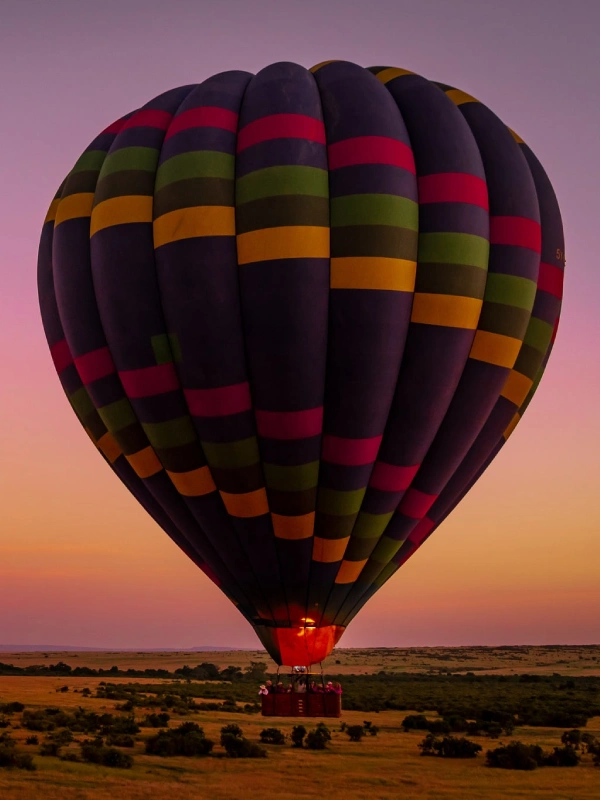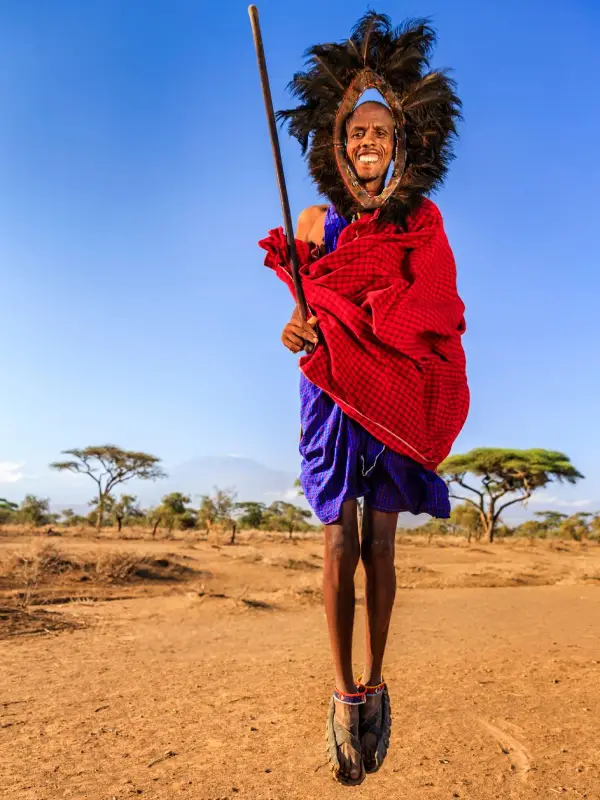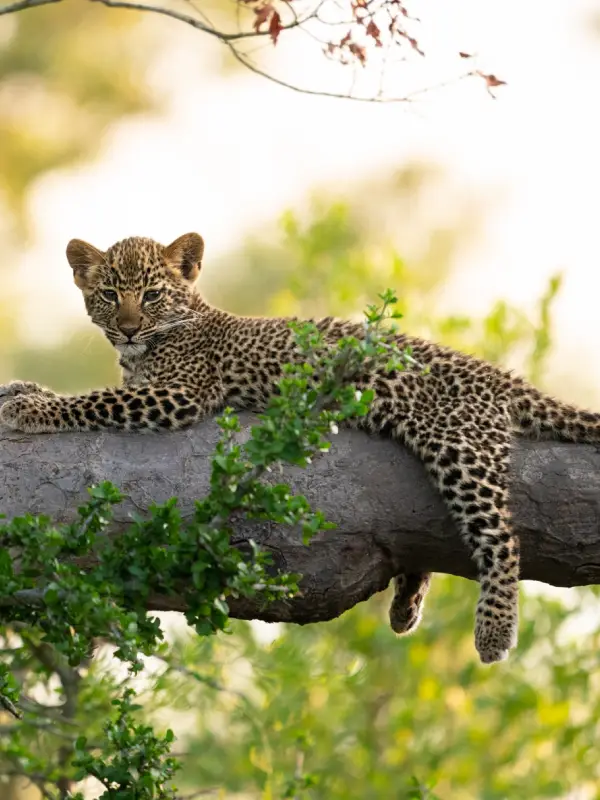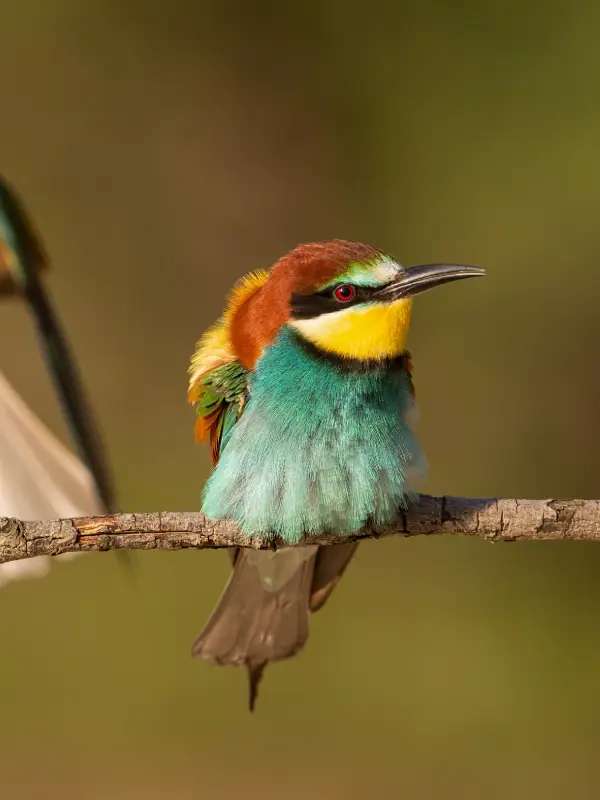Experiences
Wildebeest Migration
Witness Serengeti’s vast plains alive with migration drama.
The Wildebeest Migration, East Africa’s greatest spectacle, sees over 1.2 million wildebeest, 300,000 zebras, and gazelles traverse the Serengeti-Mara. Following rains, their journey features dramatic river crossings, predator hunts, and mass calving, nature’s raw cycle of life and survival.
What Is the Great Migration?
The Great Migration is the most significant land-based animal movement on the planet. Columns of wildebeest stretch across the plains, sometimes so vast they can be seen from space. Each animal covers up to 1,000 kilometers per year, driven by instinct and survival needs.
Before we look at the seasonal highlights, here are some key facts that make this event extraordinary:
- Over 1.5 million animals move in a continuous cycle.
- River crossings are filled with peril, from rushing waters to lurking crocodiles.
- Calving season sees up to 8,000 calves born daily.
- Predators like lions, leopards, and hyenas closely follow the herds.
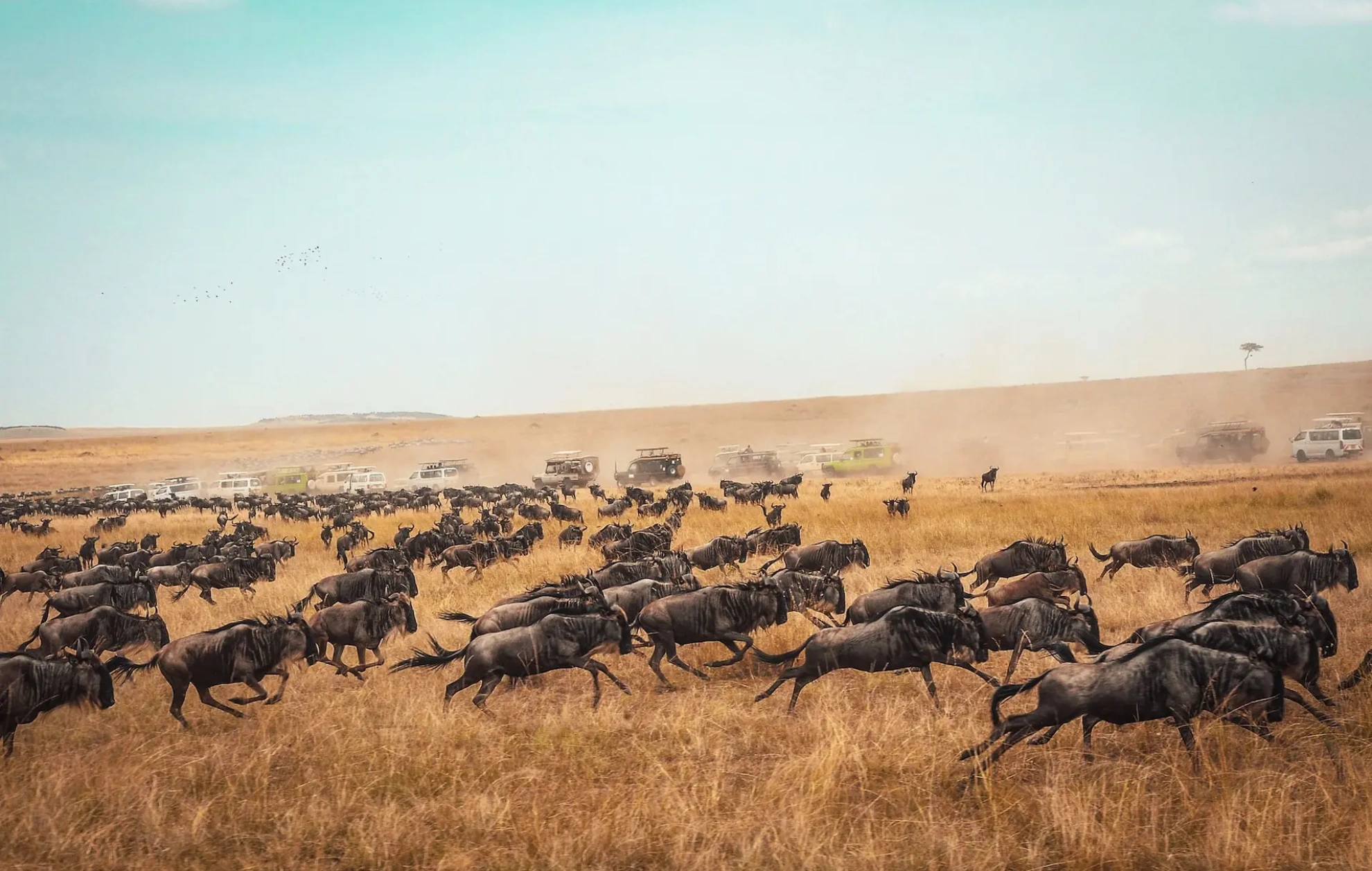
Migration Route and Cycle
The wildebeest migration follows a circular, clockwise route across Tanzania and Kenya. There is no actual start or finish, but the southern Serengeti calving season is often considered the beginning of the cycle.
From the fertile short-grass plains near Ngorongoro, the herds gradually move northwest into the central Serengeti, later reaching the Western Corridor and the Grumeti River. By mid-year, they advance north to the Mara River, crossing into Kenya’s Masai Mara. Towards the year’s end, rains draw them back south to Tanzania, completing the cycle.
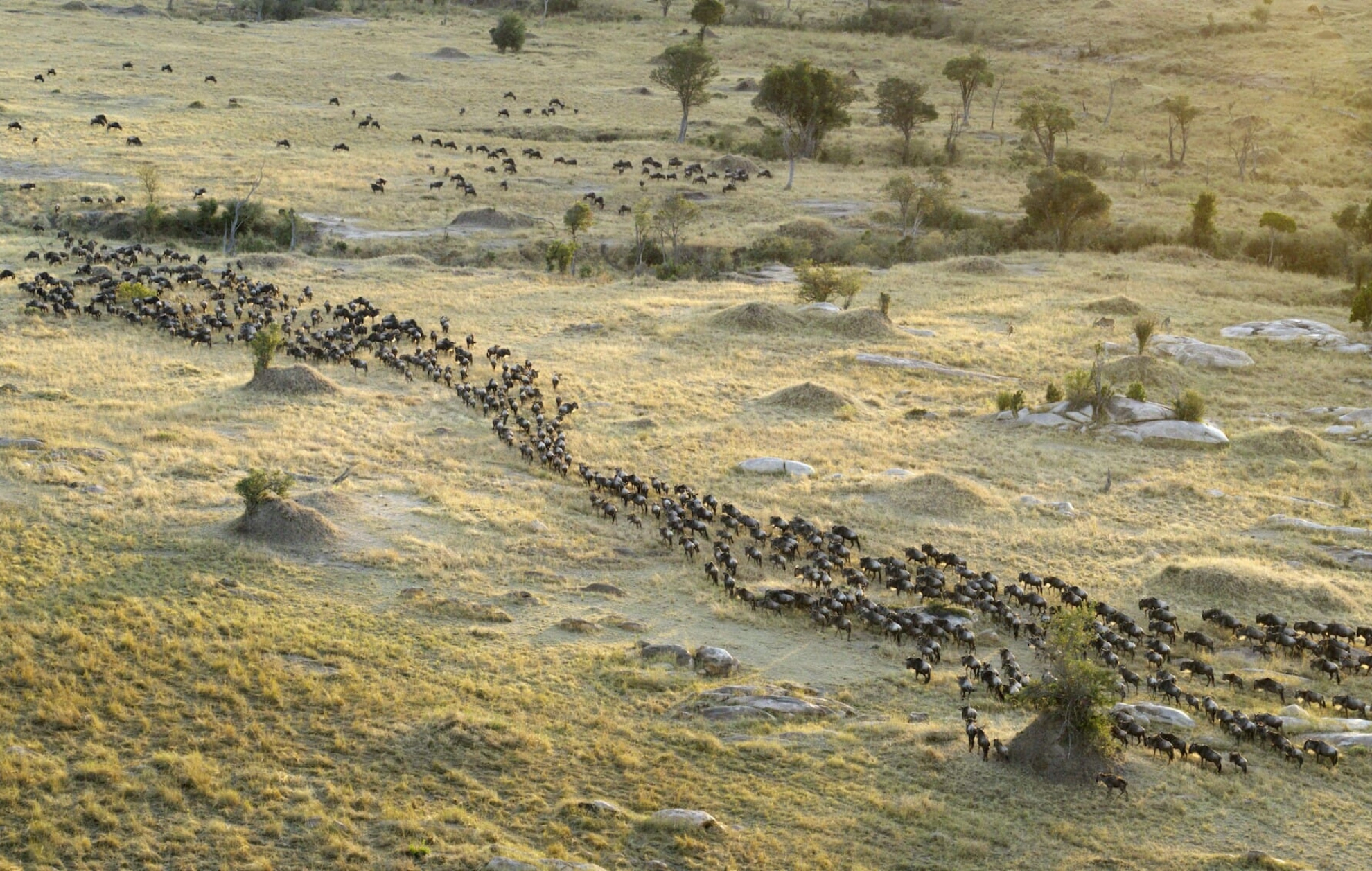
Seasonal Highlights
Each stage of the migration offers travellers a unique experience. Knowing where and when to go is key to witnessing the most dramatic scenes.
January – March: Calving Season
At the start of the year, herds gather in the southern Serengeti and the Ngorongoro Conservation Area. The short-grass plains provide nutrition for newborns, making this the prime calving period.
- Around 400,000 calves are born within weeks, nearly 8,000 per day.
- The abundance of young attracts predators, creating intense hunting scenes.
- The best place to witness this stage is the southern Serengeti plains.
April – May: Central Serengeti & Grumeti
After calving, the herds begin moving northwest, searching for new grasslands. By May, vast numbers can be seen stretching toward the Moru Kopjes and the Western Corridor.
- Mating season begins, with males engaging in dramatic head-to-head battles.
- The herds face the Grumeti River, home to large crocodiles.
- Safaris at this time are quieter, as tourist numbers are lower.
June – July: The Drama of River Crossings
As the dry season sets in, the herds mass in the Western Serengeti. By July, the first crossings of the Mara River begin—a highlight for many travelers.
- The crossings involve sheer chaos, with crocodiles waiting in the water.
- Tens of thousands of wildebeest cross daily, following the first leader’s leap.
- This is considered one of Africa’s greatest wildlife spectacles.
August – October: Northern Serengeti & Masai Mara
By late July and August, the herds are split between the Serengeti and Kenya’s Masai Mara. River crossings remain common during this period.
- Animals cross both the Mara and Talek Rivers in large numbers.
- Big cats, particularly lions, concentrate near riverbanks to hunt.
- The Masai Mara offers exceptional migration viewing until October.
November – December: Returning South
With the rains beginning again, the wildebeest turn south toward Tanzania. By December, they arrive in the Serengeti’s southern plains, completing the cycle.
- Herds stretch in long columns across the plains.
- Calving season preparations begin as they settle near Ngorongoro.
- The circle of life resets, starting the journey once again.
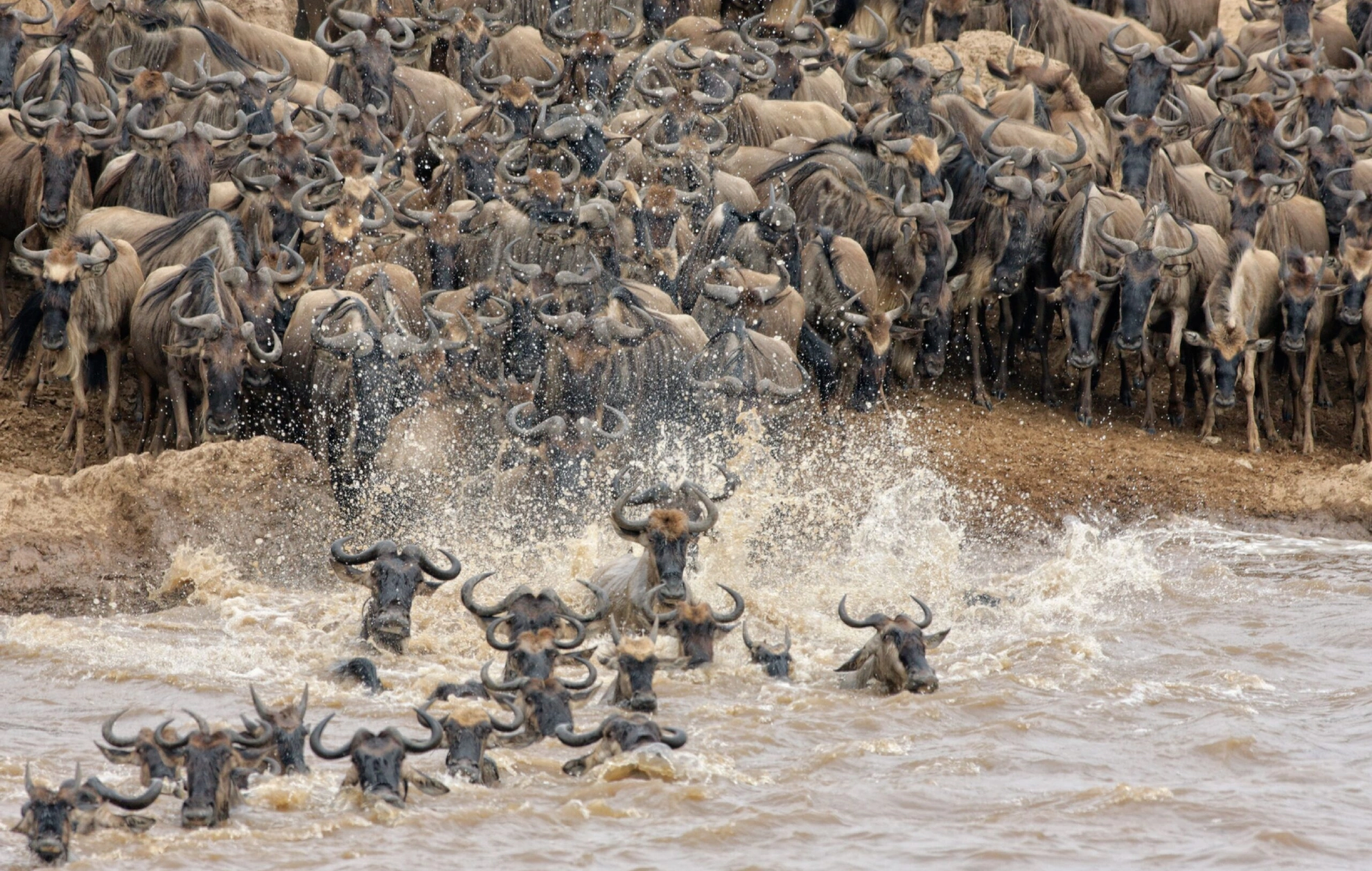
The Drama of River Crossings
One of the most breathtaking parts of the migration is the river crossing. Herds gather nervously on the banks, sensing danger below. Crocodiles lurk in the water, and strong currents threaten the weak. When the first wildebeest leaps, the rest follow in a thundering rush, creating unforgettable scenes of panic, survival, and triumph.
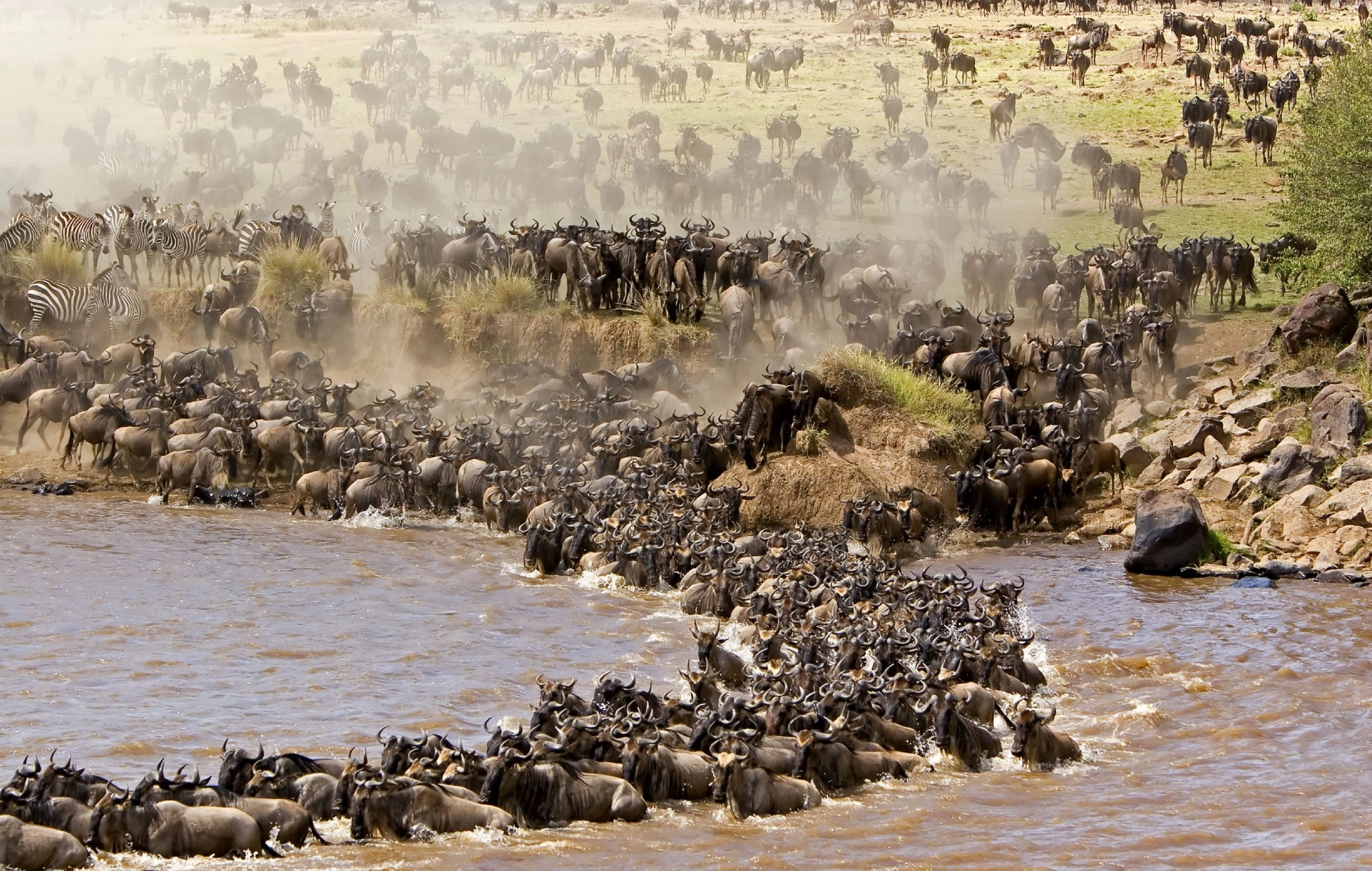
Why the Migration Happens
The movement is guided by instinct and the food search. Wildebeest follow rainfall, moving toward areas with fresh grass. While scientists debate how they sense direction, many believe they can detect thunderstorms from more than 50 kilometers away.
- Grass quality: Serengeti grasses are rich in protein and calcium.
- Rainfall cycles: The herds move based on seasonal weather patterns.
- Instinctive survival: The journey is hardwired into their behavior.
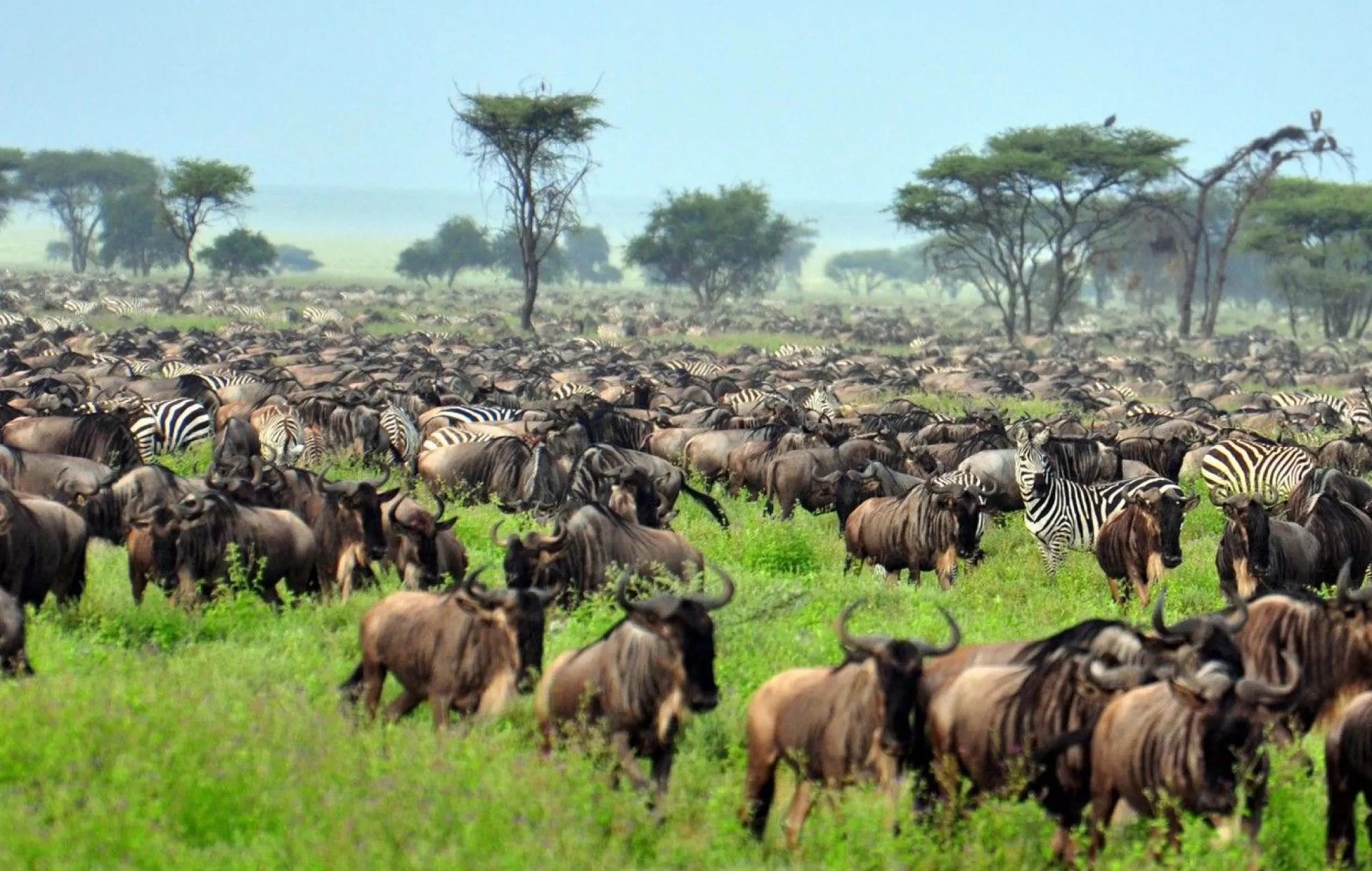
Travel Tips for Witnessing the Migration
Seeing the migration requires careful planning, as timing and location are everything.
- Best Time:
- January–March for calving in the south.
- June–October for dramatic river crossings.
- Best Places: Serengeti National Park in Tanzania and Masai Mara in Kenya.
- Photography: Early mornings and evenings provide the best light.
- Safari Style: Mobile camps that follow the migration bring you closest to the action.
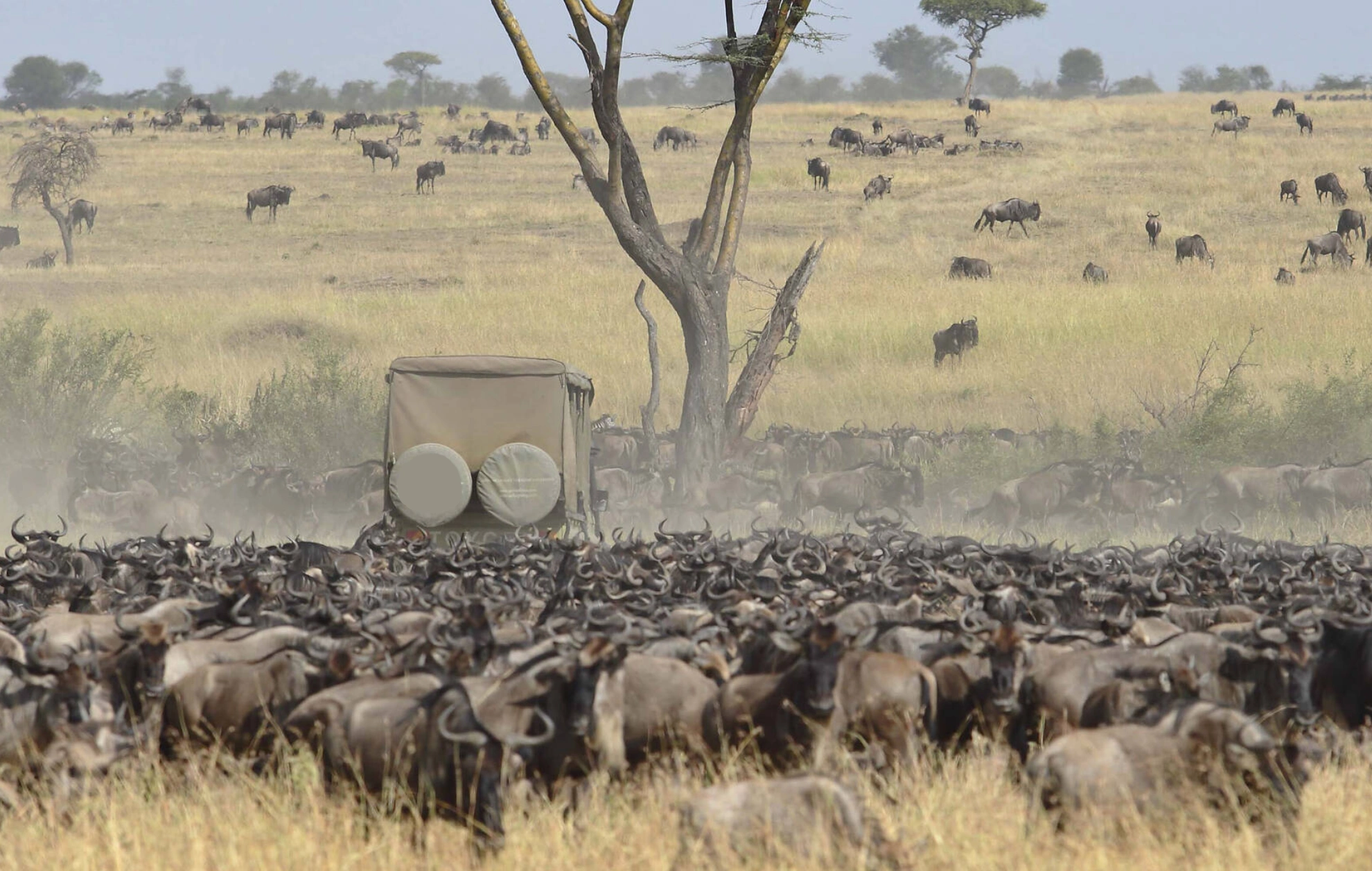
A Living Wonder
The Wildebeest Migration is not a single event but an ongoing cycle that sustains the Serengeti-Mara ecosystem. It is nature’s theatre at its finest—birth, survival, and struggle played out on an epic scale. For travellers, it remains a once-in-a-lifetime experience, offering unforgettable memories of Africa’s untamed wilderness.
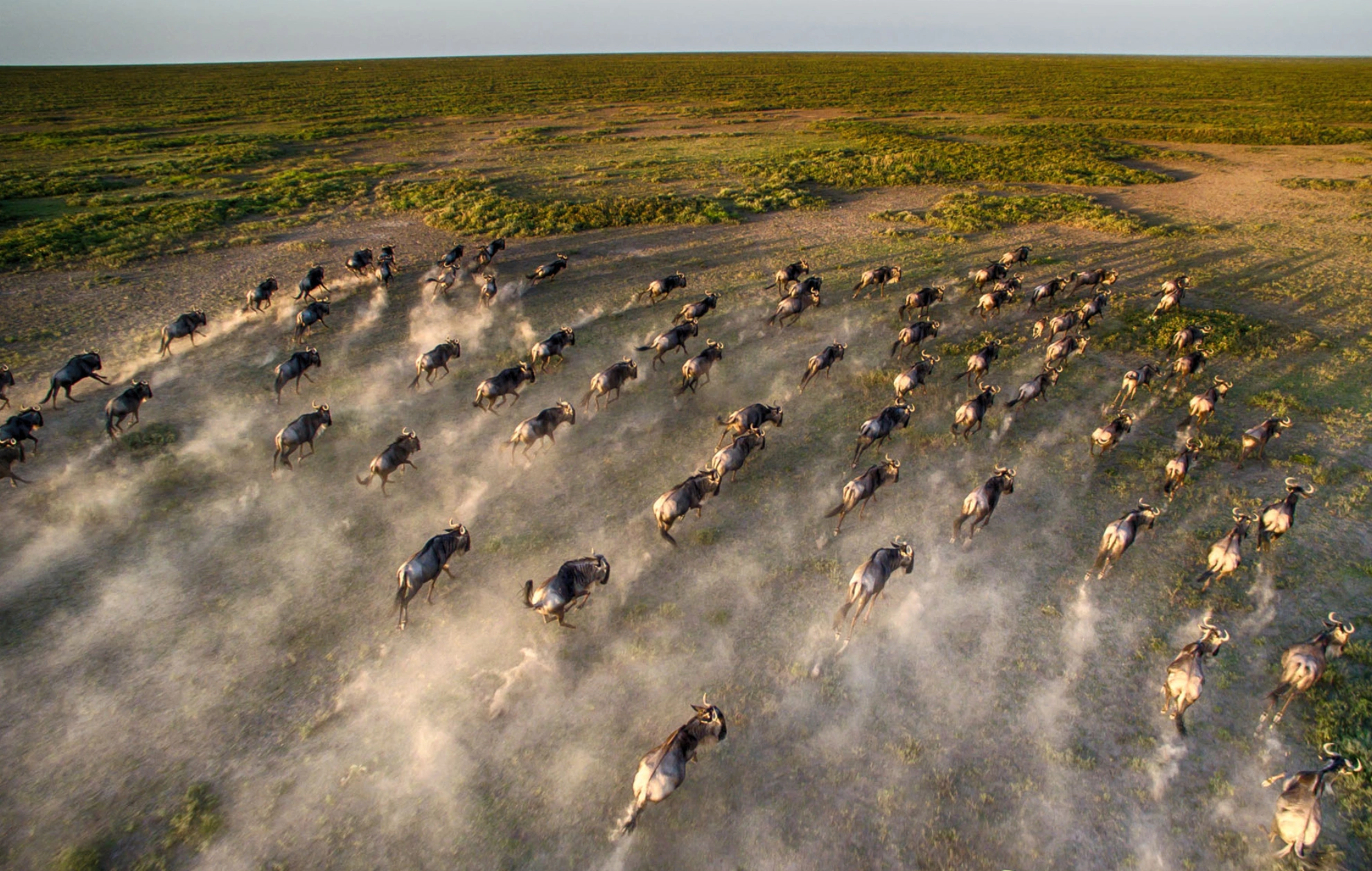
Discover Tanzania's Best Safari Experiences
Balloon Safari
Cultural Tours
Photography Safaris
Bird Watching
Creating Your Dream Safari, The Way You Want it
Kingse Safaris Africa offers customized tours tailored to your needs. Everything about your trip can be altered to suit your travel style, from the activities to the schedule. Join us and design your dream journey with us!








